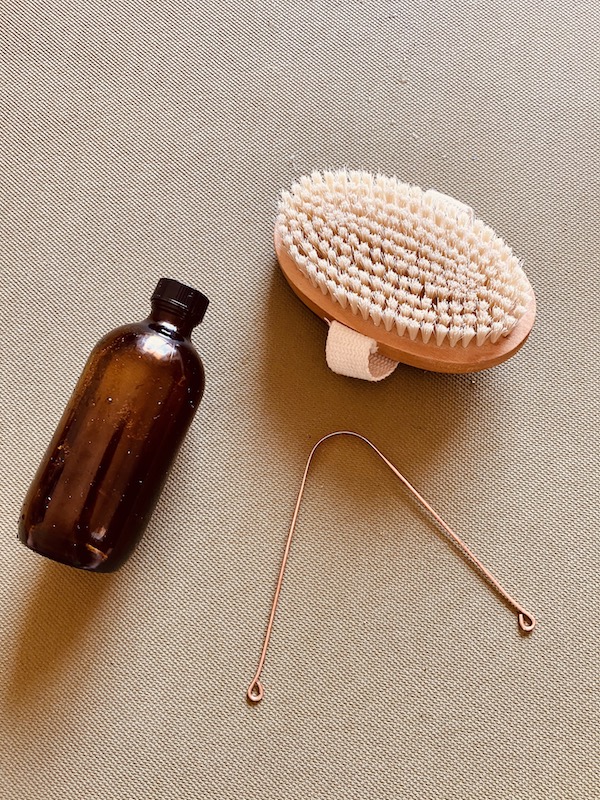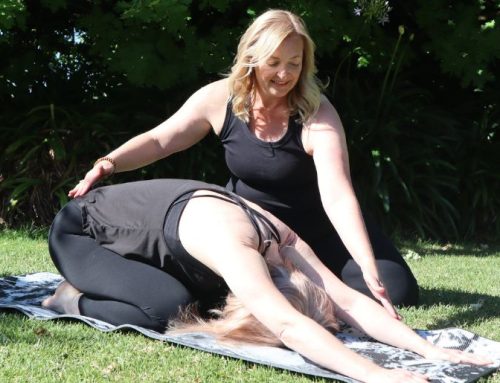The essence of Ayurvedic wisdom is about brining ourselves back into balance with Nature. Understanding how to align our body and mind with nature’s rhythms is how we can begin to find harmony. One of the most simple yet, profound, ways we can do this is by adjusting our daily routines and rituals to become more supportive to the elements of nature around and within us.
In Ayurveda we work with a Dinacharya or daily routine. The Sanskrit word Dinacharya means ‘to follow the knowledge of the day’. Our daily routines and rituals are key to help us stay balanced, vital and to prevent imbalances from occurring. A Dinacharya is typically practiced in the morning alongside our yoga practice and helps to prepare our body and mind for the day.
Creating a Dinacharya is about incorporating Ayurvedic principles and practices into our day. This can be a combination of Ayurvedic wellness rituals, adjusting our yoga and meditation practice, observing how we are nourishing our bodies and making our daily schedules more supportive.
Dinacharya will look different for everyone depending on your ‘Prakruti’ or Ayurvedic constitution. Our practices may also change depending on the season, stage of life or our current ‘Vikruti’ (current state of imbalance). It’s important to adapt our practice to suit our current needs although, there are some key factors that Ayurveda recommends.
- Rise ideally just before sunrise to harmonise with our circadian rhythm. This is also a time when Vata dosha is most predominant and there is a natural sense of lightness in the air.
- Hydrate with warm water or tea to kindle our ‘agni’ or digestive fire and to prompt our bowels to clear.
- Practice tongue scraping to remove ‘ama’ or toxins that accumulate whilst sleeping. Using a copper or stainless steel tongue scraper back and forth 5-10 times.
- Practice oil pulling with coconut or sesame oil by swishing a tablespoon of warm oil in the mouth for about 15-20 minutes. This promotes good dental hygiene and clears bacteria. (This can be done at anytime during our Dinacharya – I like to do this whilst I’m cooking breakfast.)
- Practice Jala Neti to clear out the nasal passages by using a Neti Pot with warm slightly salted water.
- Once we have cleansed and hydrated the body, we are ready to sit for meditation. Ideally practice meditation for 20-30 minutes first thing in the morning when you are feeling fresh and clear.
- Practice asana and pranayama to awaken the body. This is best done before breakfast and between the hours of 6-10am when Kapha Dosha is naturally predominant and we can feel a little sluggish.
- In addition, or alternatively to our asana you could also do some general exercise such as a brisk walk in nature, a movement class or anything that creates a light sweat in the body to break up the stagnancy of Kapha Dosha.
- Practice ‘Garshana’ or dry body brushing to stimulate lymph and circulation and remove accumulation of dirt and dead skin cells. This is particularly helpful for Kapha Dosha or if you are feeling sluggish.
- Practice ‘Abyangha’ or self-oil massage using warm oil that is suitable for your constitution and the season. Particularly helpful for Vata Dosha or in colder climates. Apply the oil liberally and leave on for a minimum of 10 – maximum 40 minutes before bathing. This practice can be done in the morning at any time during your routine that suits you – for example, I like to do my Abyangha and then sit for meditation, bathing afterwards.
- Eat a light and nourishing breakfast that is suitable for your constitution. Ayurveda typically recommends enjoying a warm, lightly spiced breakfast to kindle our digestive fire such as porridge, cooked fruit or spiced milk.
 A little extra note: As you may have heard ~ a healthy morning routine truly begins the night before. Ayurveda recommends having a light and easy to digest dinner and getting to bed before 10pm to insure a restful sleep.
A little extra note: As you may have heard ~ a healthy morning routine truly begins the night before. Ayurveda recommends having a light and easy to digest dinner and getting to bed before 10pm to insure a restful sleep.
Your Dinacharya is meant to support you exactly where you are with the time you have available. This may mean adopting all or just one or two of these practices into your day. It is always best to start small and build from there. Choose practices that you are naturally drawn to and those that are supportive with what you are working towards at the moment. It is also helpful to understand which practices are particularly supportive for your unique constitution or current imbalances.
Creating an Ayurvedic Dinacharya is how we can re-connect to our natural rhythms. Understanding how to align our body and mind with the day, the season and our own personal constitution is how we can begin to find balance. Let your Dinacharya be a steady way to support yourself through the changes fluctuations of nature and daily life.
By our retreat host Emily Carton: Yoga Teacher and Ayurvedic Wellness Advisor
www.emilycartonwellness.com
@emilycartonwellness






